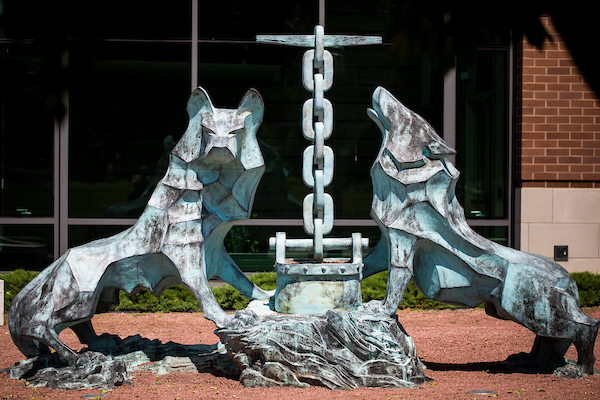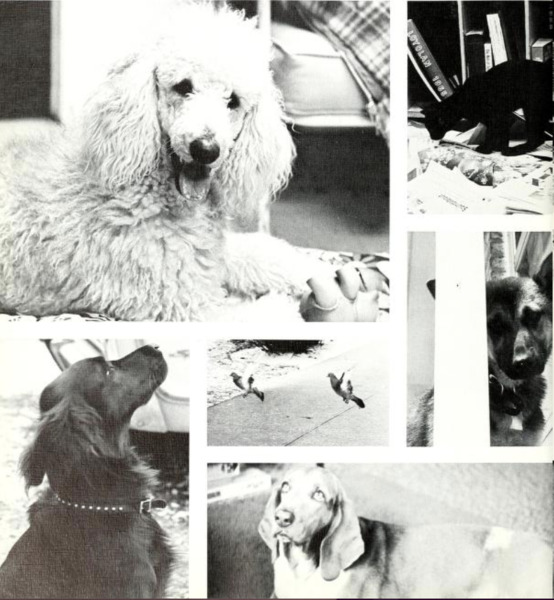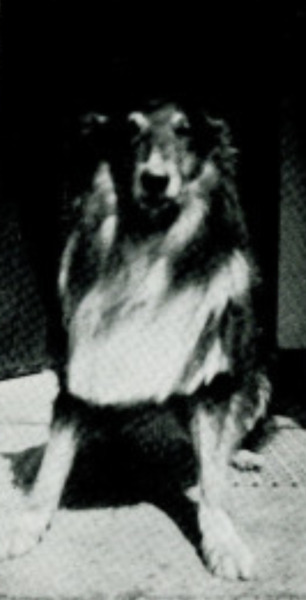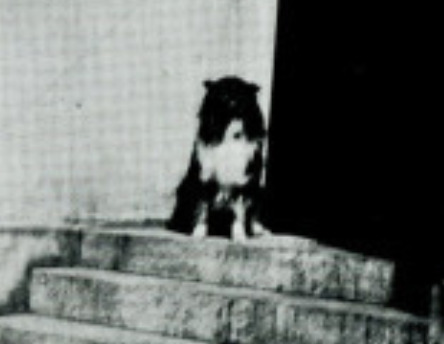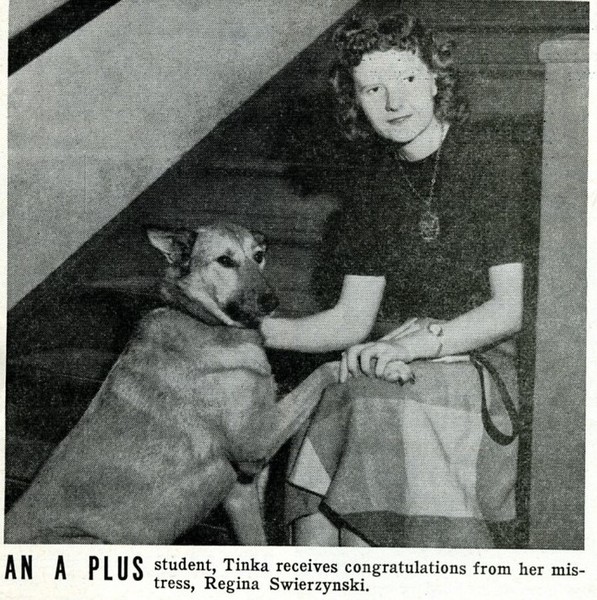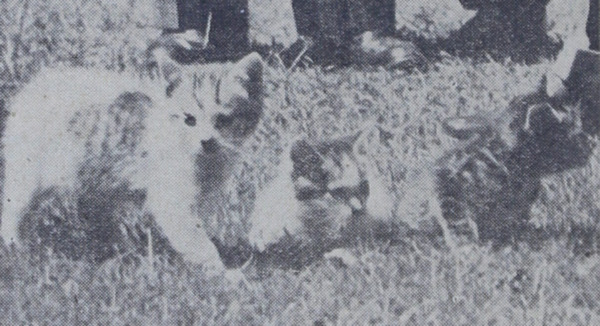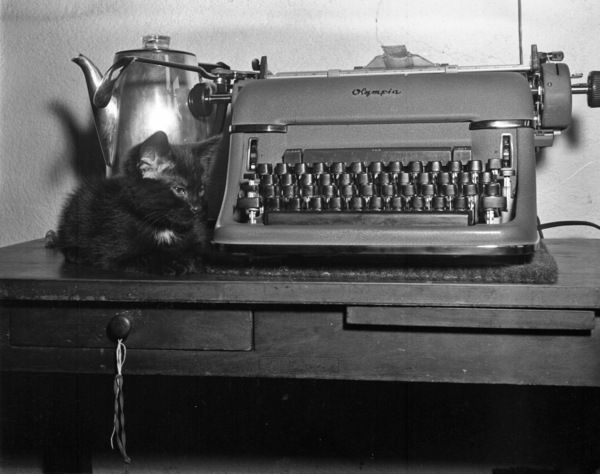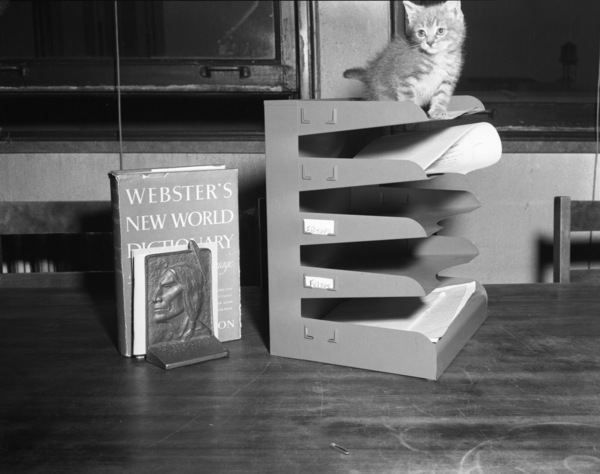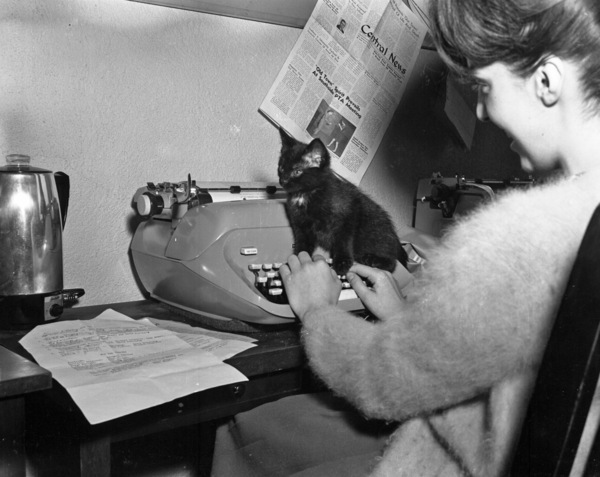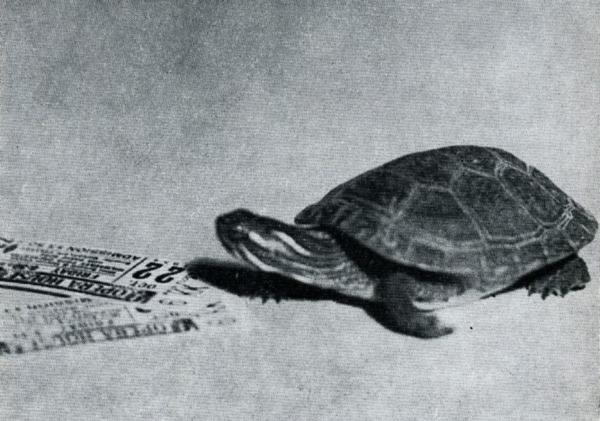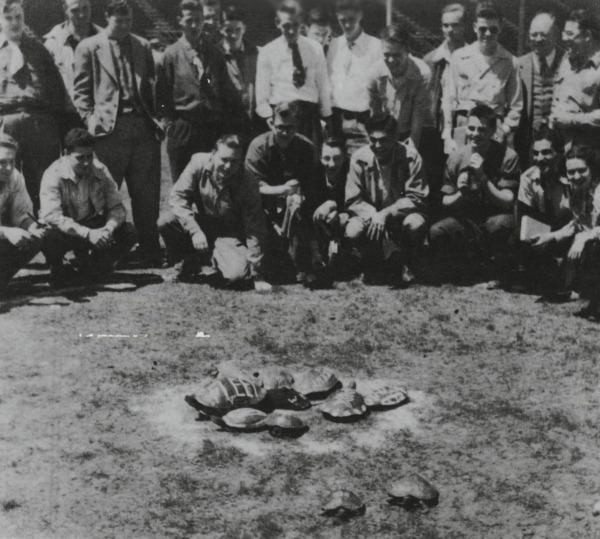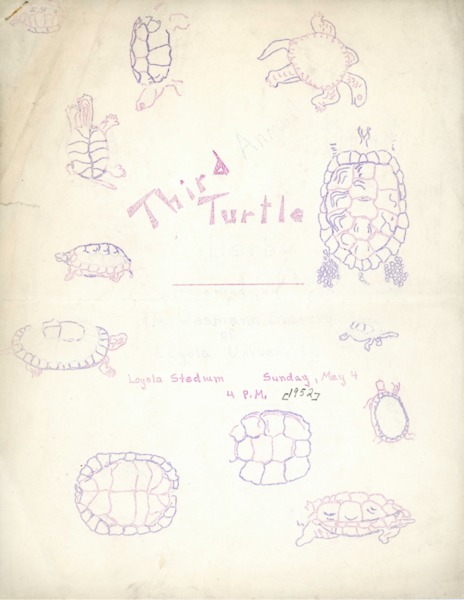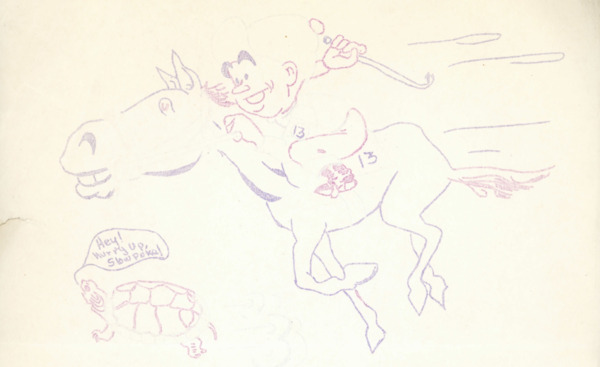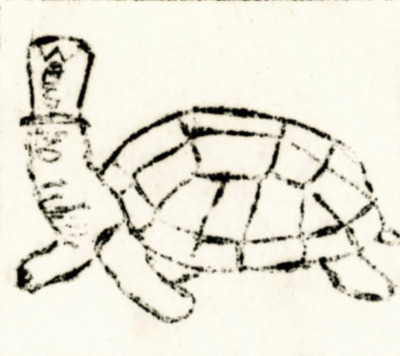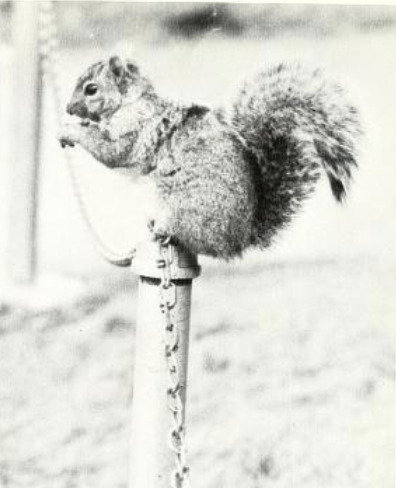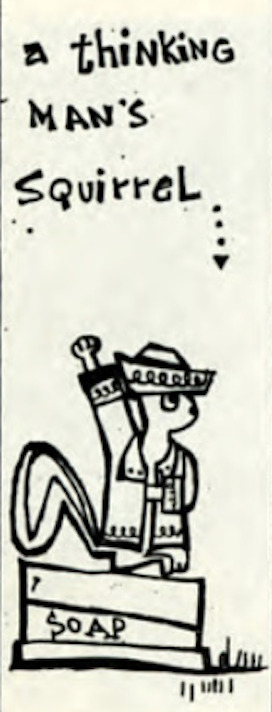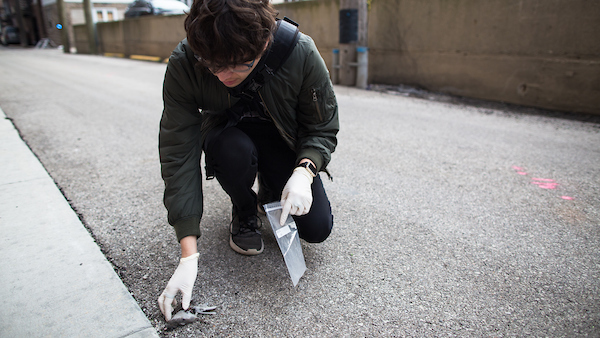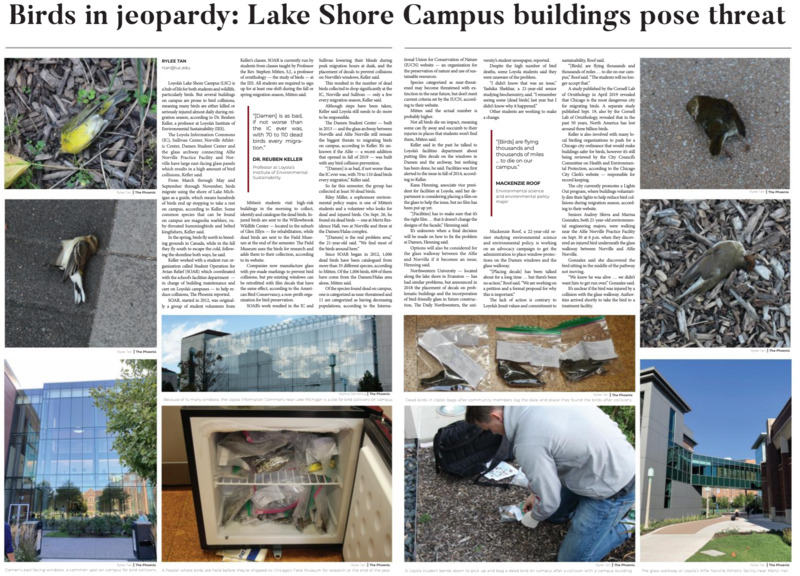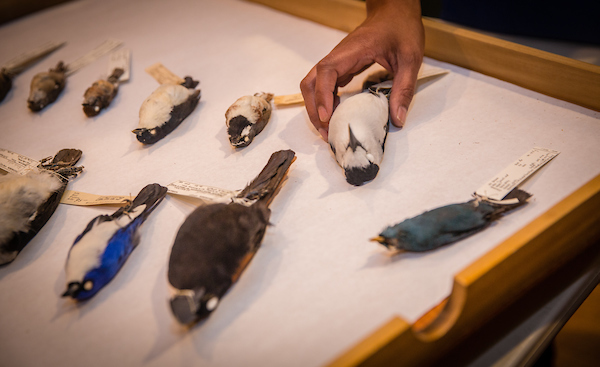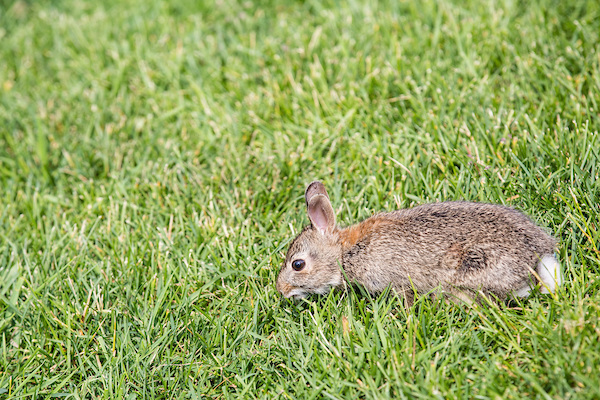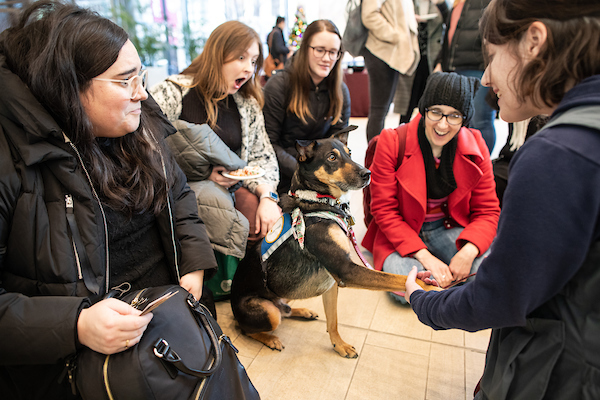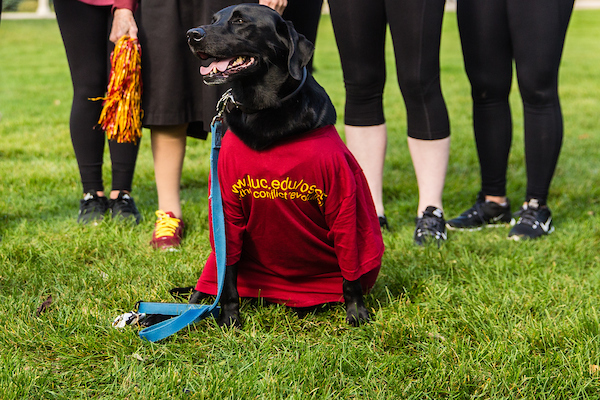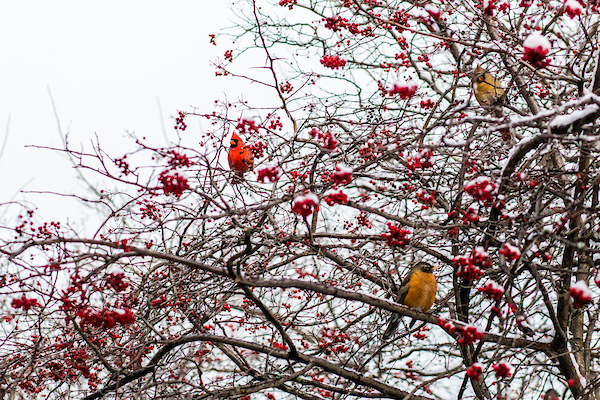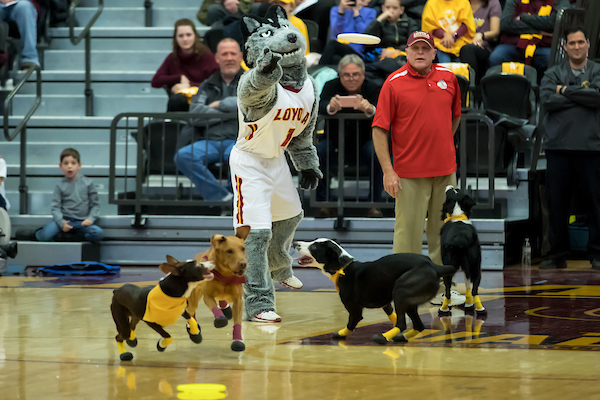Campus Critters
“All things bright and beautiful/ All creatures great and small/ All things wise and wonderful/ The Lord God made them all.” - Cecil F. Alexander (1818-1895)
Legend has it that the Loyola family, whose name is a contraction of the Spanish words “lobo y olla” (wolf and kettle), was prosperous and generous enough to have leftovers for feeding even wild animals such as wolves. The Loyola’s family crest, which features two wolves feeding from a kettle (pot), commemorates the family’s reputation for generosity. Several centuries later, St. Ignatius of Loyola, was born into this family and would go on to establish the Jesuit order. As the legend suggests, the House of Loyola has had a long and intimate connection with animals, and students at Loyola and Mundelein College* have likewise dwelled with “all creatures great and small” through the decades.
Campus canines and Kampus Kitten Klubs
Although the only wolves on Loyola’s campus come in the form of statues, their domesticated cousins, dogs, have formed an important part of the school’s community through time. One of the first canine pets was Prince, a tri-color collie appearing in some of Mundelein College’s earliest student publications in 1931. Both college mascot and bodyguard, Prince lived “on the first floor, in comfort befitting one of royal lineage”. This first floor was presumably “the little green house” next door to the Skyscraper, Mundelein College’s building, since the Skyscraper was still under construction when Prince arrived.
Prince took his guarding duties very seriously with a bark which “would intimidate an army”, once badly frightening a postman into clinging to the porch railing with “his heels in the air”. Prince’s bark appears to have been worse than his bite, however, and he was a great favorite with both the faculty and students. Apart from his bodyguard duties, Prince also accompanied the BVMs on their daily morning walks as they discussed the school’s operations and checked in on the progress of the Skyscraper’s construction. Unfortunately, it appears that Prince passed away unexpectedly while indulging in a favorite activity, chasing cars.
Another canine who took her duties at Mundelein College assiduously was Tinka, a German Shepherd and guide dog for Regina Swierzynski, who was a junior at Mundelein College in 1957. Swierzynski planned to teach at a college after earning her master’s degree, and Tinka assisted Swierzynski in navigating activities such as roller skating and attending movies and plays. While Tinka was not the “most sociable of beings”, readers of her feature in the Skyscraper, Mundelein’s student newspaper, were reassured that she was “really quite friendly” and only barked and growled to alert Swierzynski to others’ presences. Tinka also shared an uncanny resemblance with most students, harboring a dislike of waking up early and loving sweets.
Cats also held a special place in the hearts of Loyolans and Mundelites. In 1948, the Loyola News held a competition to name members of the Lake Shore Kampus Kitten Klub, three kittens (two males and one female) born several months earlier to a cat named Baby on the Lake Shore Campus. Students let their creative juices flow and the kittens were thoughtfully named Eva (“judged to be the most expressive of the actions of the kitty”), Lulu (thought to be the most “school-spirited” of the entries with the repetition of Loyola’s initials), and Lambert (whose timid actions suited his name). Each winning contestant received a packet of Chesterfields.
In true feline fashion, cats took it upon themselves to watch over the work of their human staff. Students working in the Skyscraper’s main office in 1964 were supervised by two kittens, a jet black one named Tiki Sin, and a black-and-white one named Cassius. A sign, “Beware of kitten”, alerted visitors to the presence of these two feline staff. Old photographs suggest that Tiki Sin clearly felt that her presence on the typewriter’s keys was essential for helping staff finish their articles.
Encounters with the scaly kind
In the 1950s, an unusual animal presence ambled its way onto both campuses: turtles. They were the stars of a new sport at Loyola and Mundelein known as the turtle derby. As its name suggests, the event was a race in which “hard-shell thoroughbreds” raced (or walked) neck to neck to the finish line. Turtle derbies appear to have been held annually, with each college holding the event at different times in the year. Loyola held theirs in May whereas Mundelein’s was initially conducted in December, before being held in October sometime around 1954.
Turtle derbies were largely a student-led effort, although Loyola’s Biology department was also involved at one point in purchasing turtles for Mundelein College students. Entry in the turtle derby seems to have been open to all. At Mundelein’s first turtle derby, students could enter their own turtles or those of the student organization they belonged to, with entrance fees for clubs and individuals being 25 cents and 50 cents respectively. Loyola students were also invited to enter individual or fraternity “racers”. While all manner of upsets are common at races, an unfortunate event happened during the 1954 flood, when both competitors were washed away by the rising waters before the race. Thankfully, two more were found and the race went off without further incident.
While Mundelein’s turtle derbies were first helmed by individual students, and later the SAC (Student Activities Council), the Wasmann Biological Society took the lead in organizing turtle derbies at Loyola. Loyola’s chapter of the society was one of several across Jesuit institutions in the United States. The society, named for Father Erich Wasmann, a Jesuit who wrote “endlessly on the psychology of ants”, aimed to spur interest in biology and provide a space for members to discuss biological research. Loyola’s chapter, founded in 1940, promoted its activities through original research, holding lectures and demonstrations throughout the school term, and encouraging its members to conduct independent research. The society newsletter, The Probe, also enabled students to publish their findings. Other forms of outreach to the wider school community included events such as a Biology Fair, and of course, the annual turtle derbies.
The turtle derby appears to have been a key event for the society, as the promotional materials for the third annual race suggest. Members not only designed a poster showcasing various turtle carapaces, they also created a form requesting vital “racing data” such as plastron and carapace length, and songs to enliven the event. Apart from creatively marketing the event, the society also actively encouraged student participation by purchasing turtles from “a soup company of Southern prominence” and offering them for sale as race entrants. These candidates had been chosen for their “intrinsic speed qualities” after “a season’s conditioning in the bayous of Louisiana and Florida”, and each possessed an impressive stride of no less than eight inches. Each turtle was available for purchase at $1.50, and buyers were encouraged to condition their competitors using the "Army Manual for Tank Maintenance". The Wasmann Biological Society had a particular talent for conditioning their turtles, as the impressive two-feet win of their entrant, Joanne, in 1951 suggests. Beyond the derby, turtles also featured in the society’s activities in other ways, occasionally gracing the cover of their newsletter and having a place in the name of the society’s annual mixer, the “Turtle Trudge”.
Other hard-shelled critters were collected by students for science instead of sports. An early issue of the Skyscraper in March 1931 (the first academic year for Mundelein College) features a call for students to collect “scorpions, starfishes, eels, sea shells, or anything in the form of specimens” for the museum in the biology department if they chanced upon any in their “vacation wanderings” or “monotonous walks” along the lake shore. Mundelites also had the opportunity to observe live specimens in their biology class, although their scientific curiosities sometimes led to tragic twists. A first-year student, “[m]otivated by an uncontrollable desire to know more of the baby snails and their family life in the aquarium”, opened the drain. Before the class had ended, the snails were found “writhing and tossing on the dry floor of their home” and were ultimately “rudely snatched from this realm”, leaving students devastated and pleading for more snails.
Wildlife around campus
As the two articles above suggest, students at the Lake Shore Campus were and continue to be blessed with an abundance of wildlife on the school grounds. Two “outstanding squirrels”, Napoleon and Josephine, commanded Mundelein students’ attention in 1959. Assuming a “paw-on-chest" stance, Napoleon would deliver a “violent chattering address” to Josephine, who would “scamper coyly back and forth, flirting her tail in Napoleon’s direction.” Rabbits, another common presence on campus, could be spotted at a time of night when “only bunnies and editors” are present. In recent years, rabbits might even have come to dominate the campus landscape, taking over the turf of squirrels. Their presence has brought a new issue however, as they graze on ground-level plants and cause damage. An interesting (and perhaps slightly alarming) wildlife sighting on campus also included a possum, which was eventually caught and “exported to the forest preserves”.
Over time, students moved from merely observing wildlife to taking steps toward fostering greater biodiversity on campus and making the campus safer for wild animals. The Student Operation for Avian Relief (SOAR) was founded in 2012 and works with the school’s departments to make Loyola’s campus safer for migrating birds. To accomplish this, students rescue injured birds and send them to the Willowbrook Wildlife Center for injury assessment, and if possible, rehabilitation and release. Dead birds are recorded, identified and sent to the Field Museum where they are added to the collection. SOAR also works with school departments to reduce the risks posed by campus buildings. One measure undertaken has been lowering blinds at some buildings, and this has reduced the death toll of migrating birds greatly. However, not all buildings have adopted such measures, and SOAR continues to work with them to find solutions.
Students have also been involved in restoration efforts for increasing biodiversity at Loyola University’s Retreat and Ecology Campus (LUREC), which was acquired in 2010. In order to attract bee populations, students and staff work together to remove invasive plants and sow the seeds of native plants in cleared areas. This work prevents the invasive plants from pushing out native plants, and allows for a variety of wildflowers to be maintained. LUREC’s restoration efforts have paid off and the endangered rusty patched bumblebee has been spotted again in the area. Apart from physically working on the campus, students also create databases on crucial information such as flower pollinators and their host flowers to further biodiversity efforts.
A therapeutic presence
Continuing the tradition of working canines on campus, Loyola has had a therapy dog at its Wellness Center since 2012. Tivo, a black labrador, served for five years and held weekly Talk with Tivo sessions until he retired due to arthritis in 2017. He was succeeded by Santos, a mixed breed whose heritage included the border collie and Australian cattle dog. Unfortunately, Santos’ stint as a therapy dog ended soon as he grew overwhelmed by the work. Ashlar, a Great Pyrenees mix, became Loyola’s third therapy dog in 2018 and continues his work as of 2021. Apart from meeting Loyola’s own therapy dog, students also get the chance to interact with other therapy dogs during events such as the Destress Fest, which is held in December.
Whether a therapy dog offering solace during a tough period, a squirrel squabbling over a nut, a rabbit dozing on the lawn, or a cardinal perched on a branch in winter, campus animals continue to be a constant and comforting presence through all the seasons of life.
*Mundelein College, founded and operated by the Sisters of Charity of the Blessed Virgin Mary (BVM), provided education to women from 1930 until 1991, when it affiliated with Loyola University Chicago.

